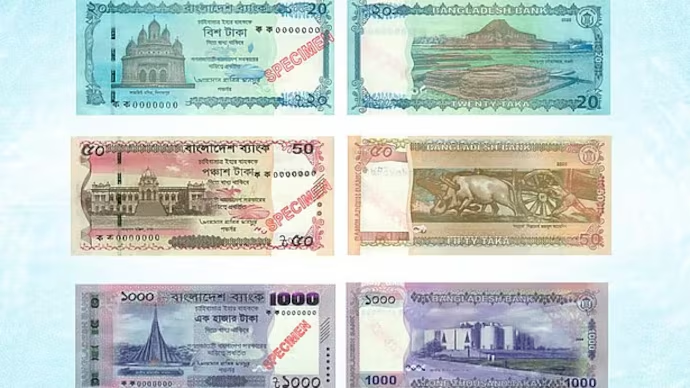In a move that underscores Bangladesh’s shifting political landscape, the country’s central bank has released newly designed currency notes that notably exclude the image of Sheikh Mujibur Rahman, the country’s founding father and a central figure in its post-independence identity.
The Bangladesh Bank introduced the updated notes—denominations of Tk 1,000, Tk 50, and Tk 20—on June 1, just days ahead of the Eid-ul-Adha holiday. Replacing Mujibur Rahman’s portrait, which has featured prominently on currency since the early years of Bangladesh’s independence, are images of national landmarks and cultural artworks, including depictions by famed painter Zainul Abedin.
The redesigned currency comes at a politically sensitive time. Sheikh Mujibur Rahman, often referred to as Bangabandhu or “Friend of Bengal,” is not only revered as the architect of Bangladesh’s independence in 1971 but is also the father of former Prime Minister Sheikh Hasina. Critics of the current shift suggest the removal is part of a broader attempt to dilute the historical legacy of the Hasina-led Awami League, which ruled for over a decade until earlier this year.
A Departure from Political Symbolism
Since independence, successive governments—especially those led by Sheikh Hasina—have elevated Mujib’s image into a national symbol. His portrait graced currency notes, government offices, and educational institutions, reinforcing his enduring presence in national life.
The omission marks a significant departure from that tradition. The new notes instead emphasize cultural identity and heritage, portraying architectural landmarks such as the National Parliament building, and artistic works that represent a broader, depersonalized national narrative.
“This move can be interpreted as an effort to reclaim national symbolism from political personalization,” said Dr. Nazmul Haq, a political historian at Dhaka University. “It’s a signal that Bangladesh is entering a new phase—one that seeks to define its identity beyond individual legacies.”
Context of Rising Tensions
The decision also comes in the wake of rising political tensions. In recent months, several monuments associated with Sheikh Mujibur Rahman have faced vandalism and protests. In February, demonstrators stormed and damaged parts of the Bangabandhu Memorial Museum in Dhanmondi, a site previously considered sacrosanct.
Earlier in 2024, a golden statue of Rahman in Kushtia was toppled by protesters, prompting nationwide debates about the sanctity of political symbols. These actions—alongside the redesign of the currency—are seen by many as efforts to challenge the dominant political narrative that has defined Bangladesh’s governance for decades.
A Nation Rewrites Its Visual Language
While some see the new notes as a much-needed reorientation toward inclusivity and depoliticization of national symbols, others argue the change risks marginalizing foundational figures.
“Erasing Mujib from the currency is not just a design choice—it’s a statement,” said Fatema Akhter, a senior member of the Awami League. “It’s an attempt to rewrite the history of our liberation struggle.”
The Bangladesh Bank, however, maintained that the redesign was part of a regular update process aimed at modernizing security features and reflecting the nation’s architectural and cultural diversity.
As Bangladesh navigates the aftermath of its most consequential elections in years, the redesigned banknotes serve as both an economic and symbolic artifact—one that captures a country in transition, wrestling with its past while reimagining its future.

